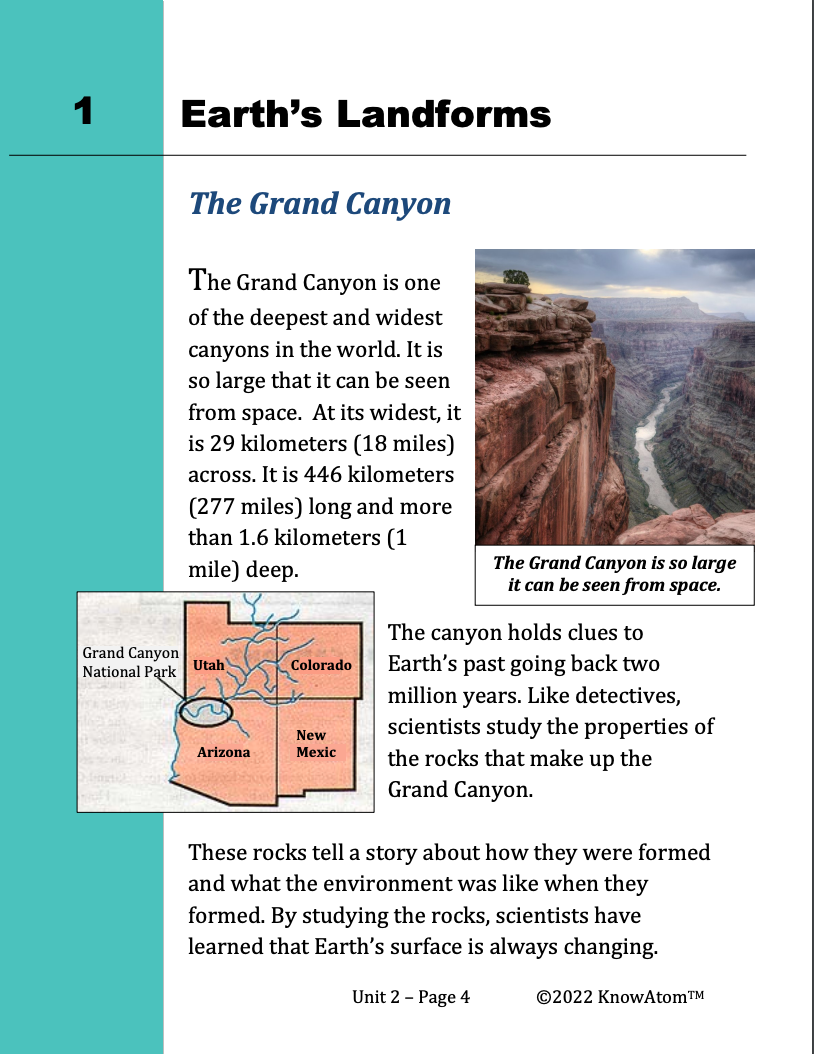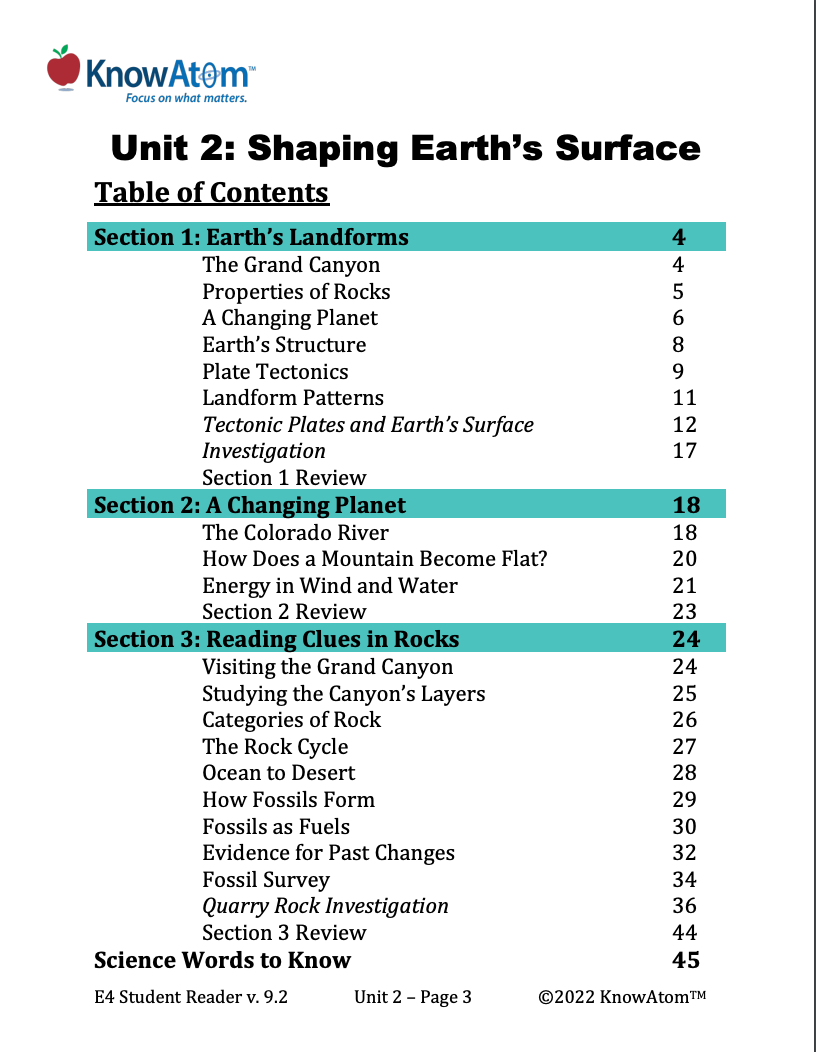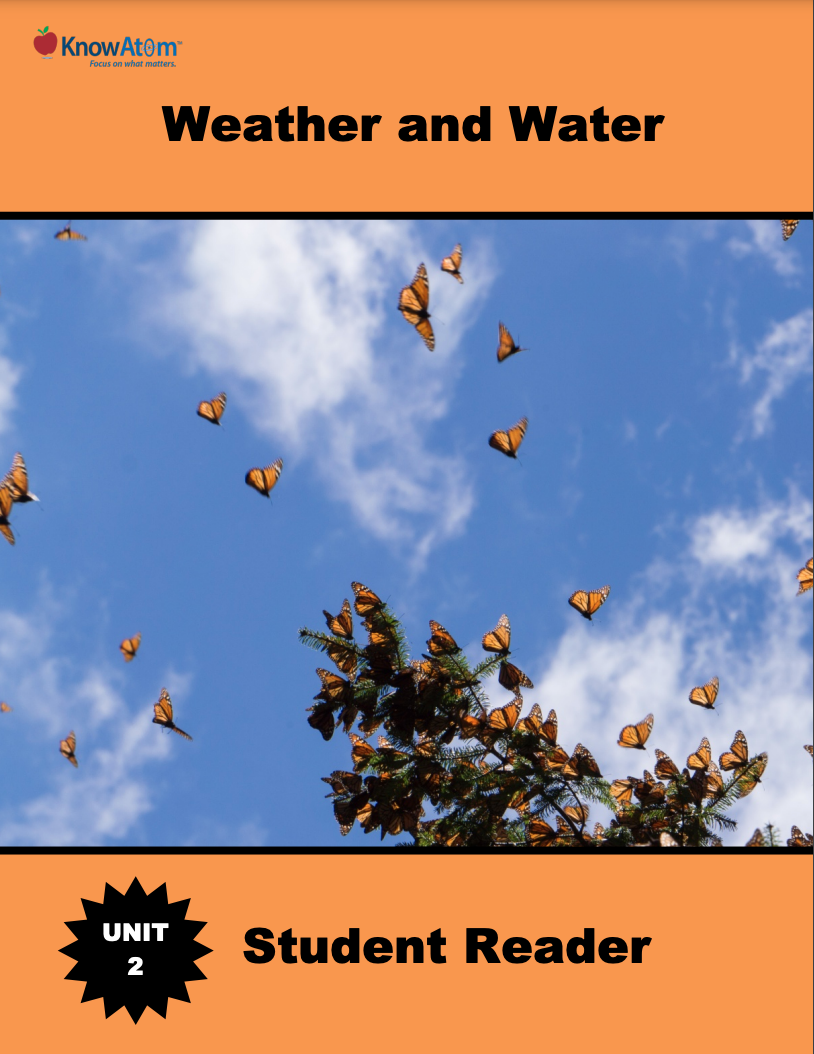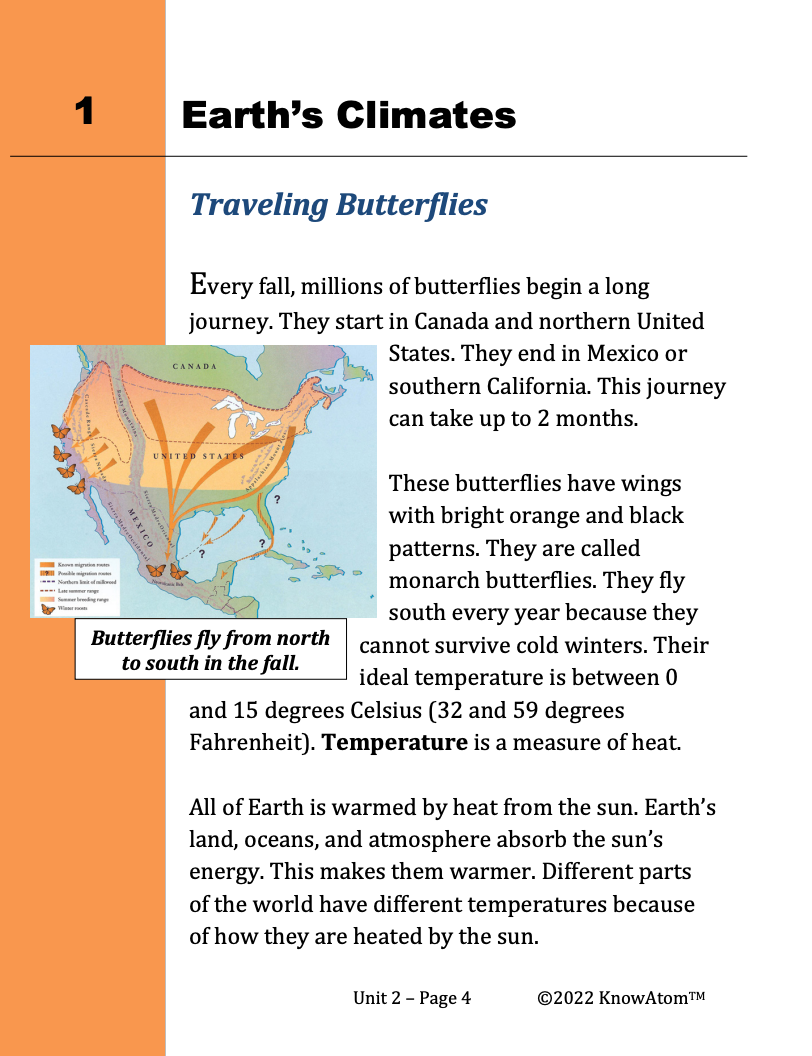
In this unit, students stimulate the movement of tectonic plates and analyze maps to observe how plate boundaries create patterns in Earth’s features. In this lesson, they build on that knowledge to observe the science phenomenon of how water erodes sediment. This page highlights key components of this lesson.

In this unit, students study Earth’s systems, analyzing the science phenomena of natural processes that shape Earth’s surface. In this lesson, students analyze clues in Earth’s rock to determine how Earth’s surface has changed over time. This page is a high-level extract of this lesson.

In the last unit, students learned about matter as they explored Earth’s position in the solar system. In this unit, students discuss how the sun provides light and heat to Earth, powering the water cycle, which in turn influences weather and climate. Students analyze the science phenomena of weather patterns in specific regions during a particular season.

In this unit, students explore the science phenomena of Earth’s weather system and analyze how heat from the sun warms Earth’s surface unevenly, powering the water cycle, which in turn drives weather and climate on the planet. Students create weather instruments to collect and analyze daily weather data.
Standards citation: NGSS Lead States. 2013. Next Generation Science Standards: For States, By States. Washington, DC: The National Academies Press. Neither WestEd nor the lead states and partners that developed the Next Generation Science Standards were involved in the production of this product, and do not endorse it.
